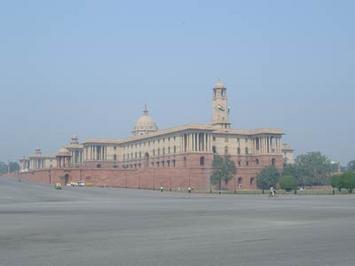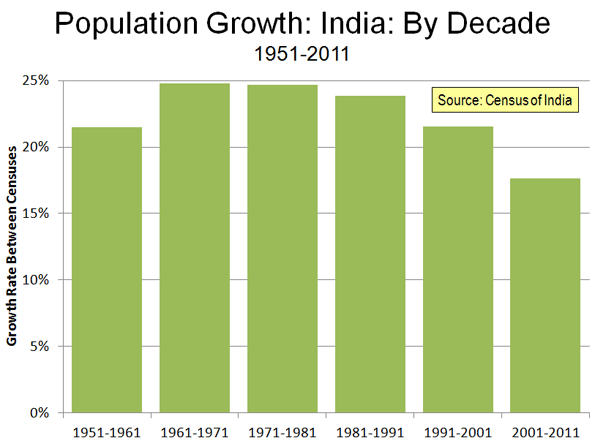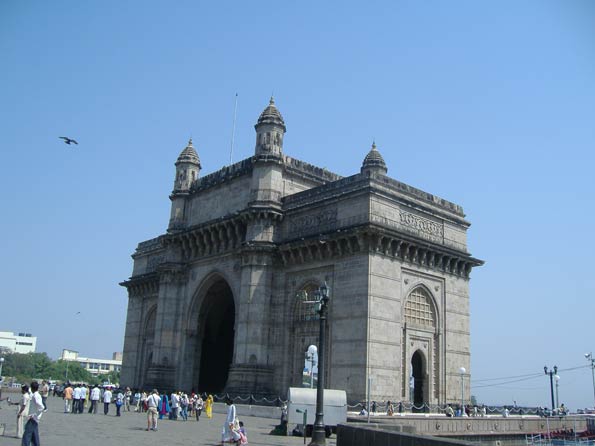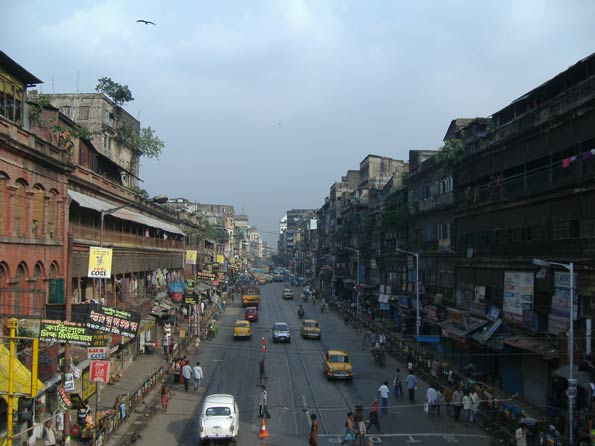
Provisional results from the 2011 census of India show a diminishing population, the lowest since independence in 1947. From 2001 to 2007, India's population grew 17.6%, compared to a 20% to 25% growth rate in previous periods since the 1951 census. Even so, India is expected to virtually catch up with China in population by 2020, with United Nations forecasts showing a less than 1 million advantage for China. By 2025, the UN forecasts that India will lead China by more than 50 million people. Nonetheless, like many other developing nations, falling birth rates are substantially reducing population growth in India.

Moving to the Cities
India’s still strong growth reflects the fact that it remains a principally rural nation. According to the 2011 census, only 31% of the population of India lives in urban areas. Urban migration, of course, is continuing but at a considerably slower rate than in China. According to the United Nations, the urban population of India will be less than 35% in 2020 and approximately 40% in 2030. Yet despite this, the number of new urban residents will be substantial. By 2030, another 225 million people will be added to the Indian urban areas, more than the population of Japan and Germany combined.
The Largest Urban Areas
During the last decade, the number of urban areas (areas of continuous urban development) in India rose by one half, from 34 to 51 (Table). However, growth was somewhat less than forecast in the largest urban areas, a phenomena that appears elsewhere, such as in now slower growing Mexico City, Sao Paulo, New York and Los Angeles. This pattern seems to be found all around the world, according to a report by the McKinsey Global Institute.
| India: Urban Areas Over 1,000,000 Population: 2011 | ||||
|
Rank
|
Urban Area
|
2001
|
2011
|
% Change
|
| 1 | Delhi, NCT-UP-HAR | 15,358,000 | 21,622,000 | 41% |
| 2 | Mumbai, MAH | 16,554,000 | 18,790,000 | 14% |
| 3 | Kolkata, WB | 13,217,000 | 14,113,000 | 7% |
| 4 | Chennai, TN | 6,425,000 | 8,696,000 | 35% |
| 5 | Bangalore, KAR | 5,687,000 | 8,499,000 | 49% |
| 6 | Hyderabad, AP | 5,534,000 | 7,749,000 | 40% |
| 7 | Ahmadabad, GUJ | 4,519,000 | 6,352,000 | 41% |
| 8 | Pune, MAH | 3,756,000 | 5,050,000 | 34% |
| 9 | Surat, GUJ | 2,811,000 | 4,585,000 | 63% |
| 10 | Jaipur, RAJ | 2,324,000 | 3,073,000 | 32% |
| 11 | Kanpur, UP | 2,690,000 | 2,920,000 | 9% |
| 12 | Lucknow, UP | 2,267,000 | 2,901,000 | 28% |
| 13 | Nagpur, MAH | 2,123,000 | 2,498,000 | 18% |
| 14 | Indore, MP | 1,639,000 | 2,167,000 | 32% |
| 15 | Coimbatore, TN | 1,446,000 | 2,151,000 | 49% |
| 16 | Kochi, KER | 1,355,000 | 2,118,000 | 56% |
| 17 | Patna, BH | 1,707,000 | 2,047,000 | 20% |
| 18 | Kozhikode, KER | 880,000 | 2,031,000 | 131% |
| 19 | Bhopal, MP | 1,455,000 | 1,883,000 | 29% |
| 20 | Thrissur, KER | 330,000 | 1,855,000 | 462% |
| 21 | Vadodara, GUJ | 1,492,000 | 1,817,000 | 22% |
| 22 | Agra, UP | 1,321,000 | 1,746,000 | 32% |
| 23 | Visakhapatnam, AP | 1,329,000 | 1,730,000 | 30% |
| 24 | Malappuram, KER | 170,000 | 1,699,000 | 899% |
| 25 | Thiruvananthapuram, KER | 889,000 | 1,687,000 | 90% |
| 26 | Kannur, KER | 498,000 | 1,643,000 | 230% |
| 27 | Ludhiana, PJ | 1,395,000 | 1,614,000 | 16% |
| 28 | Nashik, MAH | 1,152,000 | 1,563,000 | 36% |
| 29 | Vijayawada , AP | 1,011,000 | 1,491,000 | 47% |
| 30 | Madurai, TN | 1,195,000 | 1,462,000 | 22% |
| 31 | Varanasi, UP | 1,212,000 | 1,435,000 | 18% |
| 32 | Meerut, UP | 1,167,000 | 1,425,000 | 22% |
| 33 | Rajkot, GUJ | 1,002,000 | 1,391,000 | 39% |
| 34 | Jamshedpur, JH | 1,102,000 | 1,337,000 | 21% |
| 35 | Srinagar, JK | 971,000 | 1,273,000 | 31% |
| 36 | Jabalpur, MP | 1,117,000 | 1,268,000 | 14% |
| 37 | Asansol, WB | 1,090,000 | 1,243,000 | 14% |
| 38 | Vasai Virar, MAH | 293,000 | 1,221,000 | 317% |
| 39 | Allahabad, UP | 1,050,000 | 1,217,000 | 16% |
| 40 | Dhanbad. JH | 1,064,000 | 1,195,000 | 12% |
| 41 | Aurangabad, MAH | 892,000 | 1,189,000 | 33% |
| 42 | Amritsar, PJ | 1,011,000 | 1,184,000 | 17% |
| 43 | Jodhpur, RAJ | 856,000 | 1,138,000 | 33% |
| 44 | Ranchi, JH | 863,000 | 1,127,000 | 31% |
| 45 | Raipur , CHH | 699,000 | 1,123,000 | 61% |
| 46 | Kollam, KER | 380,000 | 1,110,000 | 192% |
| 47 | Gwalior, MP | 866,000 | 1,102,000 | 27% |
| 48 | Durg-Bhilainagar, CHH | 924,000 | 1,064,000 | 15% |
| 49 | Chandigarh, CH | 809,000 | 1,026,000 | 27% |
| 50 | Tiruchirappalli, TN | 847,000 | 1,022,000 | 21% |
| 51 | Kota, RAJ | 705,000 | 1,001,000 | 42% |
| Data derived from Census of India | ||||
Delhi: Delhi (National Capital Territory, Uttar Pradesh and Haryana) was reported by the United Nations to have become the second largest urban area in the world, following Tokyo in 2010. However, the Delhi urban area was nearly 1,000,000 people short of the population than projected by the United Nations. However, over the decade, Delhi managed to become the nation's largest urban area with a population of 21.6 million people, an increase of 41% over its 15.5 million people in 2001 (Note 1). This is an impressive accomplishment, since some demographers have long maintained that Mumbai could be destined to become the largest urban area in the world in future decades.
Mumbai: Mumbai (formerly Bombay), in Maharashtra, placed second with a population of 18.8 million. This compares to a population of 16.6 million in 2001. The Mumbai urban area grow only 14% between 2001 and 2011, a much slower rate than before, driven by declines in the urban core of central Mumbai – another general global phenomena – and only modest growth in the suburban Mumbai portion of the central city, with explosive growth in the suburban areas outside the central city (Note 2). Mumbai‘s 2011 population is approximately 1.5 million below the level that would have been indicated by the 2010 United Nations projection.

Kolkata: India's third largest urban area, Kolkata (formerly Calcutta), in West Bengal, registered a population of 14.1 million, an increase of only 7% from its 13.4 million population in 2001. Like the two larger urban areas, the current population of Kolkata is less than project by the UN. As in the case of Mumbai the shortfall is by approximately 1.5 million.

Chennai: Chennai (formerly Madras), in Tamil Nadu, ranked fourth among India's urban areas with a population of 8.7 million, up from 6.5 million in 2001. This 35% growth rate propelled Chennai to a population more than 1 million above expectation.
Bangalore: Information technology center Bangalore (Karnataka) was the fastest growing of the urban areas over 5 million people, with a population of 8.5 million, an increase of 49% over its 2001 population of 5.7 million. Should Bangalore's population growth rate continue, it is likely to pass Chennai over the next decade to become the fourth largest urban area. Like Chennai, Bangalore registered a population at least 1 million higher than anticipated.
Hyderabad: Hyderabad (Andra Pradesh), another of the nation's leading information technology areas, rose to a population of 7.7 million people, from 5.5 million in 2001. With a 40% growth rate, Hyderabad exceeded its population estimate by at least1 million people.
Ahmadabad: Ahmadabad, in Gujarat, is the last of the seven urban areas with more than 5 million population had 6.4 million people, which is an increase from 4.5 million in 2001. Ahmadabad grew 41% and achieve the population at least one half million higher than was expected.
Surat: The fastest growing urban area of the 16 Indian urban areas with more than 2 million people was Surat, in Gujarat. Surat grew from 2.8 million people to 4.6 million, for an increase rate of 63%.
The Largest State or Province
The state of Uttar Pradesh registered a population of just under 200 million people in the 2011 census. This makes Uttar Pradesh the largest sovereign national jurisdiction (state or province) in the world. Nonetheless, the largest urban area in Uttar Pradesh has a population of under 3 million: Kanpur. However the Delhi suburbs in Uttar Pradesh, Ghaziabad and Noida are slightly larger than Kanpur.
Soon the Largest Nation
As India edges toward becoming the most populous nation, it is clear that its growing urban areas will occupy more of the top positions among the world's largest urban areas in the years to come. But the pattern here indicates, as elsewhere in the world, that most growth, and the most rapid growth, is occurring not in the largest megacities but in smaller, and perhaps more manageable, ones.
-------
Note 1: This urban area definition includes adjacent urban areas in the state of Uttar Pradesh (Ghaziabad and Noida) and Haryana (Faridabad and Gurgaon, which borders Indira Gandhi International Airport opposite Delhi), which are not considered to be in the Delhi urban area by the census of India but are included in the United Nations definition.
Note 2: This urban area definition includes the adjacent Panvel and the Navi Mumbai-Panvel urban areas. The latter is between Panvel and Navi Mumbai (proper) which is included in the Mumbai urban area by the census of India.
Photographs by Author (Delhi, Mumbai, Kolkata)
Wendell Cox is a Visiting Professor, Conservatoire National des Arts et Metiers, Paris and the author of “War on the Dream: How Anti-Sprawl Policy Threatens the Quality of Life”












